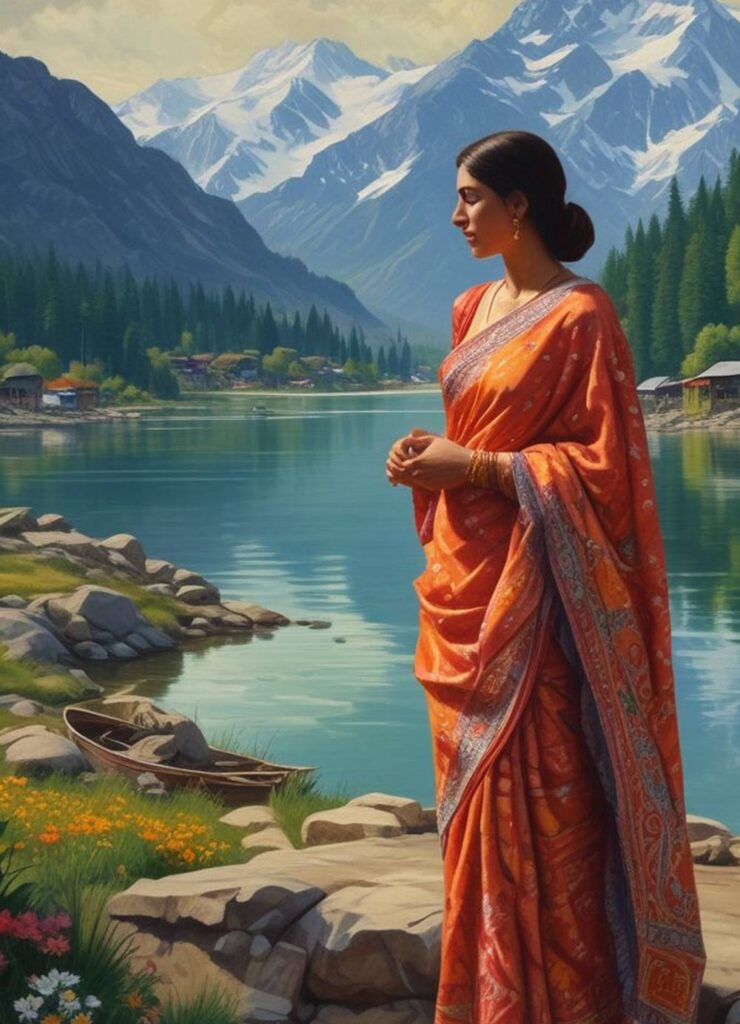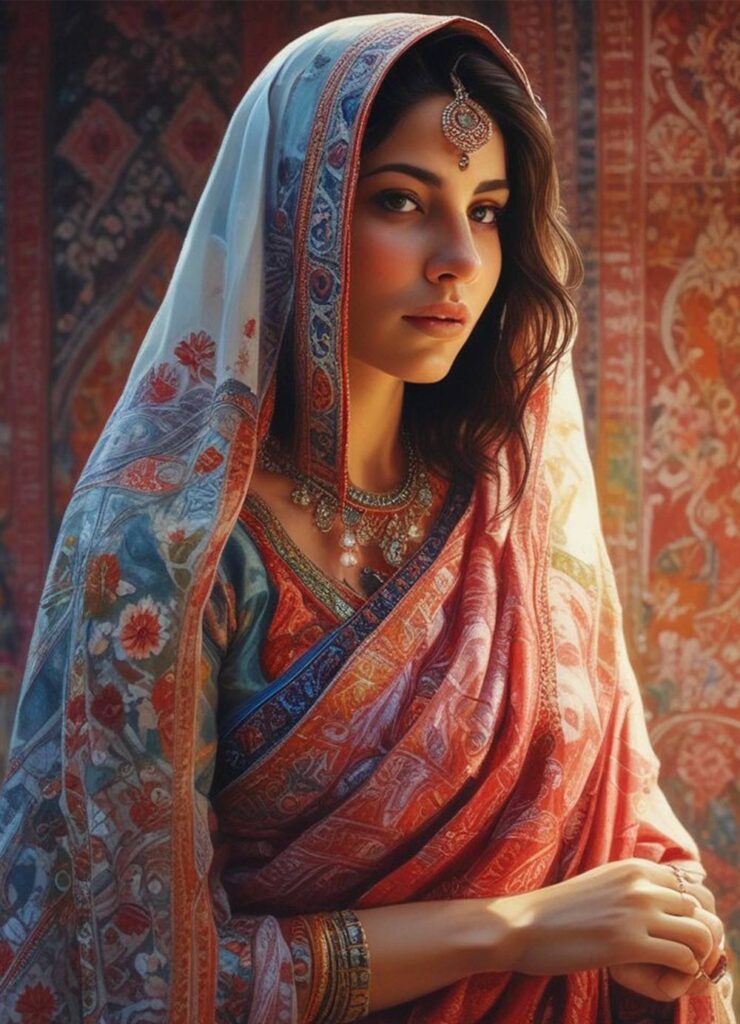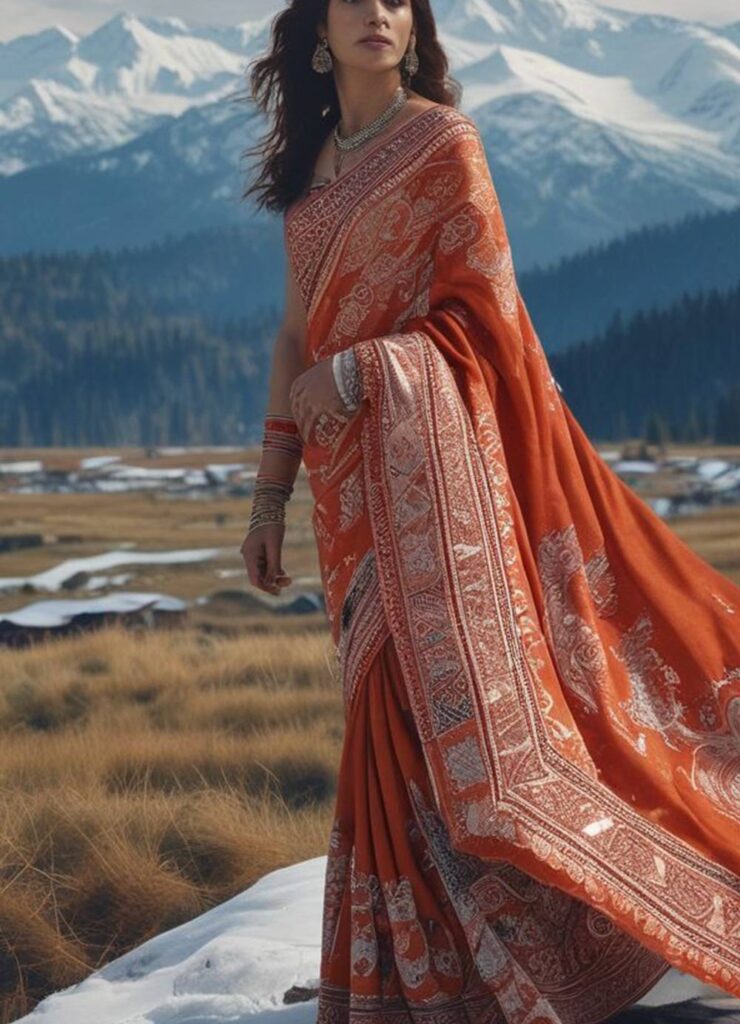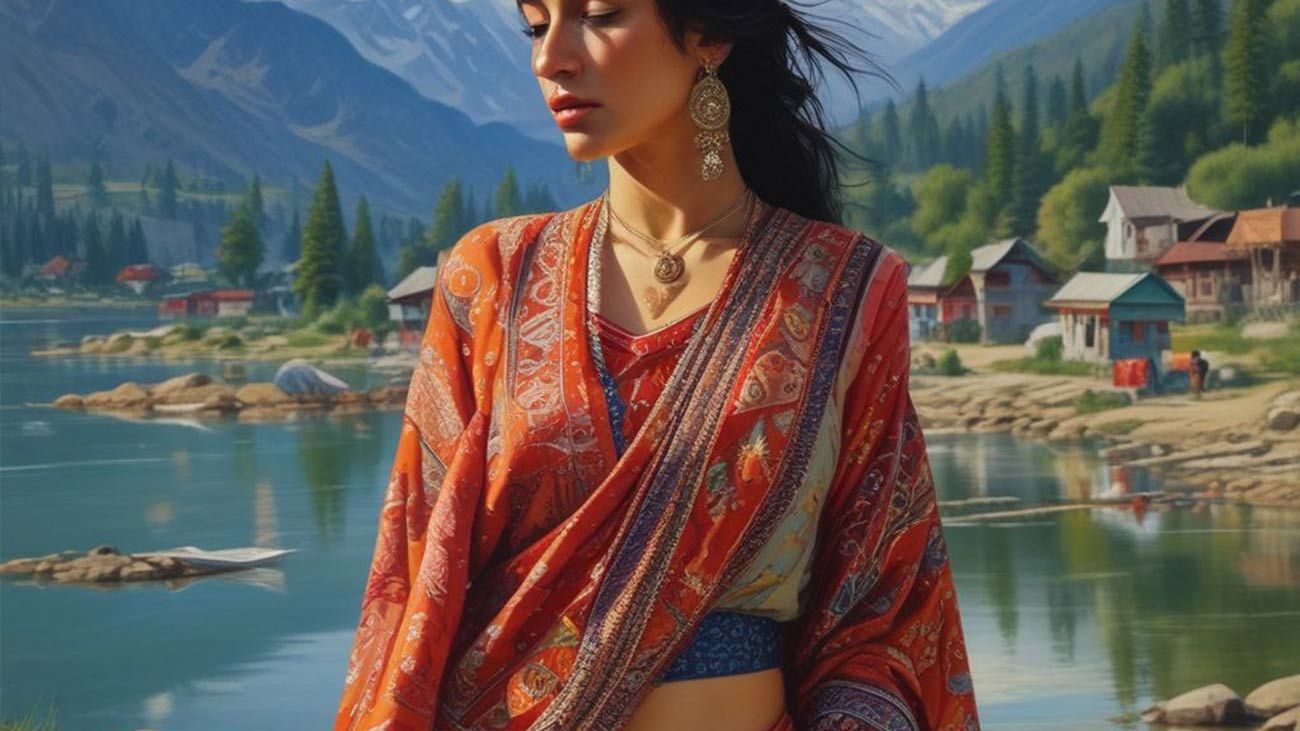The Kashmiri saree is a timeless piece of attire that embodies the rich cultural heritage and artistic finesse of the Kashmir Valley. Known for its exquisite craftsmanship and intricate designs, the Kashmiri saree is more than just a garment; it is a representation of tradition, elegance, and identity. In this article, we delve deep into the origins, craftsmanship, styles, and cultural significance of the Kashmiri saree.
Historical Background of the Kashmiri Saree
The history of the Kashmiri saree dates back centuries, intertwining with the evolution of textile arts in the region. Originating in the fertile valleys of Kashmir, this saree reflects the rich cultural tapestry woven through the ages. The saree is traditionally made from fine silk, wool, or cotton, with a strong emphasis on craftsmanship and artistry.
During the Mughal era, the art of weaving flourished in Kashmir, significantly influencing textile production. The Mughal emperors and their court favored exquisite fabrics, leading to the integration of intricate designs and patterns into the sarees. The Kashmiri saree became synonymous with royalty, grace, and luxury, worn by women of high stature during celebrations and important events.
Craftsmanship Behind Kashmiri Sarees
1. Weaving Techniques
The craftsmanship involved in creating Kashmiri sarees is nothing short of remarkable. Weavers utilize traditional methods passed down through generations, employing intricate techniques that result in unique patterns and textures. Jacquard weaving and handloom techniques are among the most celebrated methods, allowing artisans to create elaborate motifs that reflect Kashmiri culture.
2. Embroidery Art
One of the most striking features of Kashmiri sarees is their embroidery, which adds an extra layer of elegance. The most common forms of embroidery found on these sarees include Sozni, Aari, and Kashida. These techniques involve meticulous hand-stitching, where artisans use vibrant threads to depict floral motifs, paisleys, and geometric designs. Each piece is a work of art, showcasing the skill and dedication of the artisans.
3. Use of Premium Materials
Kashmiri sarees are renowned for their use of premium materials. Pashmina, silk, and wool are frequently used to ensure not only comfort but also longevity. Pashmina sarees, in particular, are highly sought after for their softness and warmth, making them ideal for both formal and casual occasions.

Styles of Kashmiri Sarees
1. Traditional Pashmina Sarees
Pashmina sarees are the epitome of luxury, characterized by their lightweight and soft texture. The intricate embroidery on these sarees makes them perfect for festive occasions and formal events. Pashmina sarees often feature elaborate borders and pallus, showcasing the exquisite craftsmanship of Kashmiri artisans.
2. Silk Sarees
Kashmiri silk sarees are known for their sheen and vibrancy. They often feature bold colors and striking patterns, making them a popular choice for weddings and celebrations. The combination of silk with intricate embroidery creates a stunning visual appeal that is hard to resist.
3. Cotton Sarees
For a more casual and comfortable option, Kashmiri cotton sarees are ideal. They are lightweight, breathable, and perfect for everyday wear. Cotton sarees often incorporate traditional motifs and are available in a variety of colors, making them a versatile addition to any wardrobe.
Cultural Significance of Kashmiri Sarees
The Kashmiri saree holds immense cultural significance in the region. It is not merely a piece of clothing but a symbol of identity, heritage, and tradition. Worn by women during various cultural events, weddings, and festivals, the saree represents the pride and artistry of Kashmiri culture.
In addition, the Kashmiri saree is a medium through which artisans express their creativity and cultural narratives. It serves as a canvas for showcasing the unique designs and techniques that have been passed down through generations. Wearing a Kashmiri saree is akin to embracing a rich legacy and honoring the craftsmanship that goes into each piece.
Caring for Your Kashmiri Saree
To preserve the beauty and longevity of your Kashmiri saree, proper care is essential. Here are some tips to keep in mind:
- Gentle Washing: Always hand wash your saree in cold water with a mild detergent. Avoid wringing or twisting the fabric, as this can damage the delicate threads and embroidery.
- Drying: Lay the saree flat to dry in the shade, away from direct sunlight. This will prevent the colors from fading and maintain the fabric’s integrity.
- Storage: When storing your saree, fold it carefully and keep it in a cool, dry place. Using a cotton or muslin bag can help protect it from dust and moisture.

Why Choose a Kashmiri Saree?
Choosing a Kashmiri saree is not just about fashion; it is an investment in a rich cultural heritage. Each saree tells a story, reflecting the artistry and craftsmanship of the artisans who create them. Wearing a Kashmiri saree not only enhances your style but also connects you to a tradition that has stood the test of time.
The versatility of the Kashmiri saree makes it suitable for various occasions, from casual outings to grand celebrations. Its unique designs and luxurious materials ensure that it remains a timeless wardrobe staple, adding elegance and sophistication to any outfit.
Conclusion
The Kashmiri saree is a beautiful blend of tradition, artistry, and elegance. With its rich history, intricate craftsmanship, and cultural significance, it remains a beloved garment among women of all ages. By choosing a Kashmiri saree, you are not just investing in a piece of clothing; you are embracing a legacy that continues to inspire and captivate.

